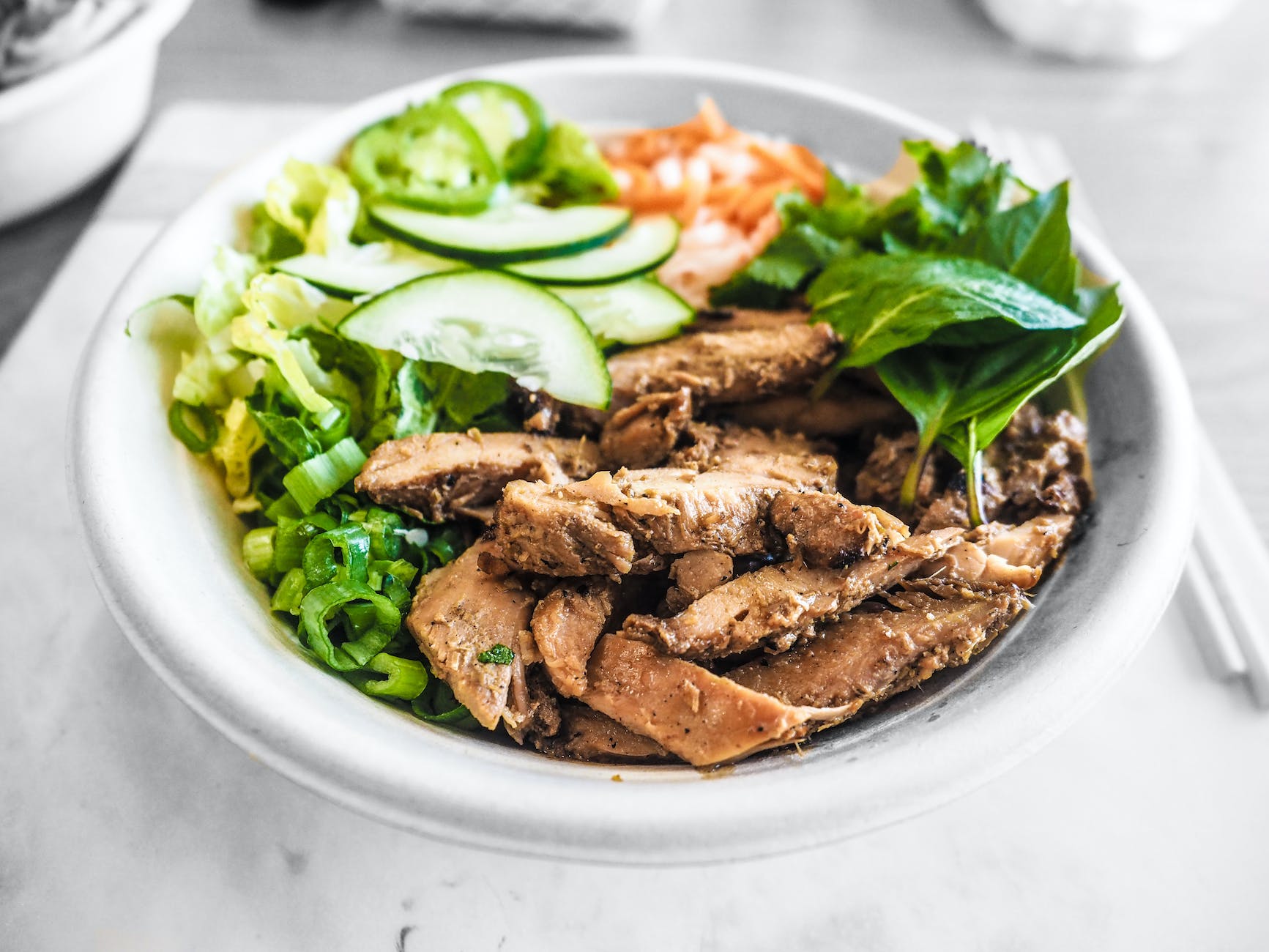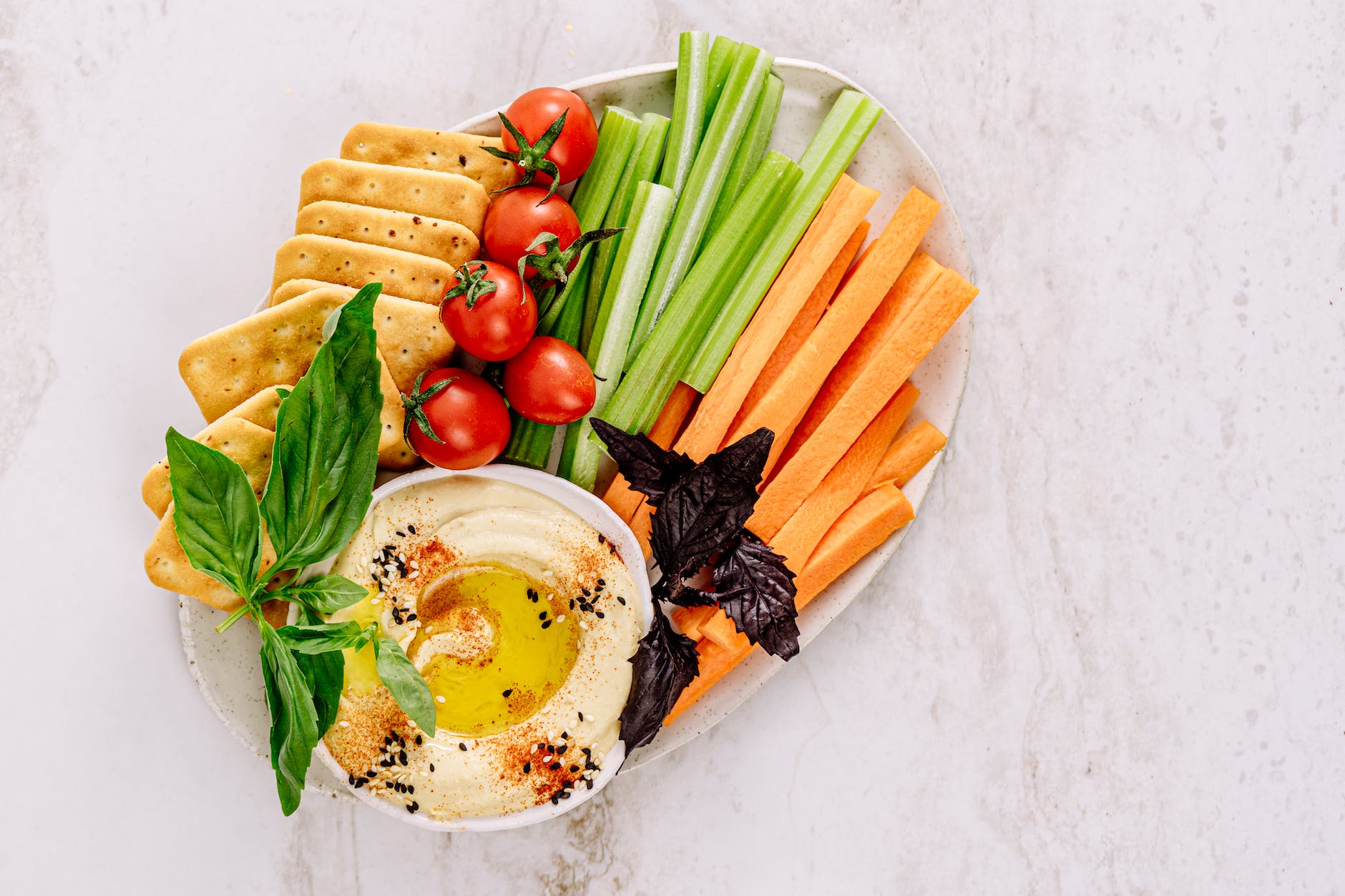Putting It All Together: Food Groups
If you’ve been reading all of the past few newsletters, you now know more about digestion and nutrition than most people do. Pretty amazing, right? Knowledge is the first step in owning your own health.
But now it’s time to do something with all of this information. Supporting good digestion and ensuring proper nutrition can get complicated if you use a reverse-engineering approach (“hmmm, how can I be sure to get enough vitamin D this week?”). Most of us are too busy for that! Instead, make it easy by thinking about what you’d like to eat that contributes to 2-3 balanced meals and 1-2 snacks every day. Then your shopping list is easy.
There are three considerations when deciding how to build your meal plans: which basic food groups to include in your diet, how to keep your plate nutritionally balanced, and finding foods that you like to eat! Today we’ll concentrate on the first item. Keep in mind that everyone has different needs, and if you have continuing digestive issues or suspect a nutritional deficiency, please ask me for some help.
01. Use the Crowding Out Method
First, use a basic “crowding out” method for deciding what goes onto your shopping list. In most of the dietary makeovers we do in the clinic, or during a 21-Day Cleanse, we usually stick to what I call “meat-and-veg.” “Meat” refers to the basic animal proteins (chicken, fish, lamb, beef, pork, etc), and “veg” means as many different types of vegetables as you can cram onto your plate*. This creates somewhat of an elimination diet, focused on foods that have relatively few side effects and lots of nutrients. Thinking more about what to put INTO your diet is simpler than making long depressing lists of what not to eat. Who needs to really put ice cream on the shopping list? Do we really need a reminder to buy junk food? Probably not! What we need instead is a framework into which we can easily fit healthy foods. Ice cream will happen anyway, but with a focus on nutrition, it should happen on an occasional basis rather than with regularity. Therefore, fresh proteins and veggies should be the first things you put into your cart.

Starting with meat-and-veg does leave out more than just junk food, and grains are usually the hard bump to drive over. We don’t leave them out in the beginning because all grains are unhealthy. There’s a large gap between the nutritionally bankrupt slice of white bread and a handful of vitamin-rich barley cooked into a nice soup. However, the biggest problem that most of us have is the enormous amount of useless carbohydrates that we’ve eaten since babyhood. We’ve tipped the balance out of our favor, and put our metabolism in the high-risk zone for disease. Therefore we need to spend some time rebalancing our blood sugar levels. Once we’ve spent a few months substituting bread and pasta with more vegetables, we’ll know what types of grains we can really do without. And in time, we can introduce healthy whole grains back in and see what happens.
Dairy products are another type of food that needs individual consideration. Many folks who are “lactose intolerant” are surprised to find that when they change the quality of their dairy (ie to raw and minimally-processed), they can digest it well. And some people just do better without dairy. The main reason we’ve been told that we “need” dairy is to ensure that we get enough calcium. But remember what we said during our digestive discussions: you can eat lots of calcium-rich foods and take supplements, but without enough digestive juices, you can’t absorb it properly. Your best bet for calcium if you can’t eat dairy products would be a daily cup of bone broth or eating “bony” fish like anchovies.
And let’s not forget the fats! There’s some confusion about this.
02. Balance
Second, think about how to balance each meal with protein, carbohydrates, fiber, and healthy fats.
So for example, if you love starting your day with an egg-based breakfast, keep in mind that while eggs contain protein, they are half carbohydrate. Therefore, to keep a balance, eat them with some veggies, and perhaps a bit of raw cheese (if you do well with dairy), and skip the toast. Use butter to cook your eggs, or pour a bit of olive oil onto your veggies for some good-quality fat to keep you full. If your usual breakfast is yogurt-based, it’s harder to keep things balanced: yogurt (and other dairy products), like eggs, are half protein and half carbohydrate, so mixing in a banana and honey will tip the balance way into sugar-land, which is not the greatest way to start your day and maintain a healthy metabolism. However, plain, unsweetened, full-fat yogurt would work. Just be sure to shop for a brand that doesn’t use fillers.
Lunch and dinner are easy to balance if you follow the “meat-and-veg” rule. By meat, I mean any type of animal protein: chicken, fish, last night’s leftover steak, etc. “Veg” means as many types of vegetables as you can pile onto your plate. So a salad with crunchy and/or roasted veggies topped with chicken and drizzled olive oil dressing would be just the ticket if that sounds good to you. Or try a bowl of soup made with a few chunks of leftover meat and the classic soup veggies: onions, carrots, potatoes, celery, and mushrooms.
If your main meals are balanced, you leave yourself a bit of leeway with snacks. Sliced apples with nut butter may lean more towards carbohydrates, but your protein and fat are still present. When folks in the clinic are trying to wean themselves from their sweetened-yogurt breakfast, they’ll have some yogurt with fruit as an afternoon snack instead. Having a small plate of raw veggies with hummus or yogurt dip is a great way of upping your “veg” quotient for the day.

As you think about each of these meals, your shopping list should take shape.
* Make sure to find vegetables that you enjoy eating. There are lots to choose from, so no need to eat broccoli if you don’t like it!
Related
Explore
01. Services
02. Resources
03. Blog
04. About
05. Contact
06. Patient Portal
07. Schedule
Sharone Franzen is a licensed acupuncturist and herbalist at Blue Willow Acupuncture, based in the Lakeside Village/West Portal neighborhood of San Francisco, California.
Contact
2636 Ocean Ave
San Francisco, CA 94132
(415) 572-1797
For appointments:
(415) 812-9860
© Blue Willow Acupuncture. All rights reserved.
